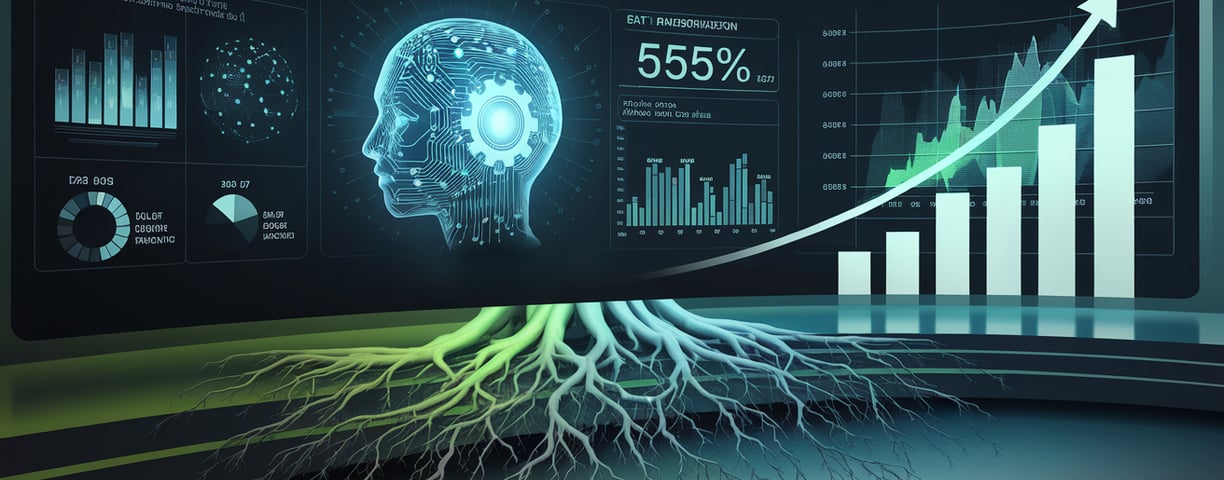OpenAI’s Bold Shift: From Nonprofit Roots to Full Profit Potential by 2025
OpenAI, known for its innovative AI models like ChatGPT, is making a significant move by transitioning from its hybrid nonprofit structure to a fully for-profit model by 2025. While the shift aims to streamline operations and compete in the tech industry, OpenAI assures its mission to develop AI for the benefit of all remains intact. This strategic change sparks debates on whether the organization can maintain its ethical focus amidst commercial pressures.
10/12/20242 min read


OpenAI’s Transition: Navigating the Shift from Nonprofit to For-Profit
OpenAI, the organization behind groundbreaking AI models like ChatGPT, was founded in 2015 with the noble mission of ensuring that artificial intelligence benefits all of humanity. Initially structured as a nonprofit, the organization aimed to promote transparency and collaboration in a field dominated by large tech corporations. However, as AI research became increasingly complex and expensive, OpenAI transitioned to a hybrid “capped-profit” model in 2019. Now, in a significant development, OpenAI has announced that it will fully transition to a traditional for-profit structure by 2025.
The Nonprofit Origins
OpenAI began as a nonprofit with a focus on ethical AI development, relying on donor funding to fuel its research. The goal was to keep the technology open, shared, and free from excessive commercialization. However, the high costs associated with developing powerful AI models like GPT-3 and GPT-4 led to funding challenges. The organization struggled to keep up with the financial demands of talent acquisition and computational power, which far outpaced the philanthropic donations it initially relied on .
The Shift to a Capped-Profit Model
To overcome these financial hurdles, OpenAI transitioned to a “capped-profit” model in 2019. This structure allowed it to attract commercial investments while limiting the amount of profit that investors could earn. The idea was to ensure that, beyond a certain profit threshold, excess earnings would go back to the nonprofit entity, aligning financial interests with OpenAI’s ethical goals. This model facilitated investments from companies like Microsoft, which has invested billions in the development of AI technologies like ChatGPT .
The Latest Transition: Moving to a Traditional For-Profit Model
In a recent internal meeting, CEO Sam Altman announced that OpenAI will shift to a more traditional for-profit model in 2025, streamlining its corporate structure. This move is intended to simplify the organization’s operations and make it more competitive in the AI landscape, which is increasingly dominated by major tech players. While the specifics of how this transition will unfold remain unclear, Altman emphasized that the organization’s core mission—developing AI for the benefit of all humanity—will remain central to its strategy . However, this shift has sparked debate, with critics questioning whether OpenAI can balance the commercial pressures of a for-profit model with its ethical commitments.
Implications for the Future
This transition marks a pivotal moment for OpenAI and the broader AI community. On the one hand, it will likely provide OpenAI with the financial resources it needs to remain at the forefront of AI development. On the other hand, it raises concerns about how the company will manage potential conflicts between profit-driven goals and its ethical mission. As OpenAI moves toward a fully for-profit model, many will be watching closely to see whether it can maintain its commitment to creating AI that serves the public good, or if this shift will compromise its long-held values .
Conclusion
OpenAI’s journey from nonprofit to for-profit encapsulates the tension between advancing cutting-edge technology and maintaining ethical oversight. As the organization transitions to a traditional for-profit structure, it faces the challenge of upholding its mission while competing in an industry driven by commercialization. How OpenAI manages this balance will shape the future of AI development and its impact on society.
